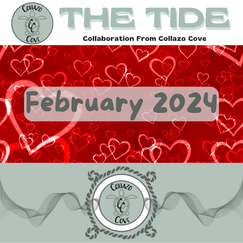|
An amazing new picture book has just been released based on the true story of Chilean high school girls who convinced NASA to send ladybugs to space. It is co-written by Melissa Trempe, an educator with a passion for equality and a love of the outdoors, and Natalia Ojeda, a Chilean doctor whose experience in the ladybug project helped change the trajectory of her life. I fell in love with the story which follows the wishes of a sweet little ladybug who dreams of being an astronaut mirrored with the dreams of a young Chilean girl who adores science. It is a meaningful and relevant story that ALL students will enjoy, but especially our girls who yearn for their place in the future of STEM. The English and Spanish languages are expertly woven throughout the text, and the illustrations by Manuela Montoya are beautiful! Featured Picture Book:
Ladybug LAUNCH - Inspired by a True Story of Chinitas in Space (2024) By Melissa Trempe and Natalia Ojeda Illustrated by Manuela Montoya Summary (via Amazon): Natalia is a chica, an ambitious girl with dreams of becoming a scientist. Luna is a chinita, an adventurous ladybug that dreams of visiting the stars. But neither dream is easy to reach. Ladybugs are meant to munch on garden pests. And no one from Natalia’s family has ever been to college. Still, both Natalia and Luna want más. Then Natalia’s all-girl class designs an experiment. If astronauts want to live in outer space, they’ll need to grow food. Could chinitas go along to keep the pests away? The girls are eager to find out, and Luna is hungry to help. If their theory is correct, it’s a project worthy of NASA itself—and the stuff all dreams are made of. This inspiring picture book is based on the real story of Chilean high school girls who convinced NASA to send ladybugs to space! Related Themes and Standards: Science:
1. Students can research other insects and their needs, then create a book using Book Creator, Canva, or Seesaw. 2. Have students work through the Engineering Design Process and develop a presentation supporting something they believe NASA should include on a future mission. 3. Create classroom terrariums like the ones in the story and make observations over a period of time. HERE is an easy plan to follow. 4. Research and create green screen videos sharing important information about other important female astronauts like Eileen Collins. 5. Choose 10 important events in the story and summarize them on cards. Tape them to each team’s Beebot (or other robot) mat and have them program the bot to follow the correct sequence of events from the story. Do you have other ideas for this story? Please share! #BetterTogether
0 Comments
As we race into the new school year, it is crucial to recognize and consider the importance and impact of STEM (Science, Technology, Engineering, Math) education for ALL children. The value is not merely limited to producing future scientists or engineers, not every child’s passion is in these areas. The importance is to foster critical thinking, problem-solving, creativity, and innovation—skills that are relevant in every aspect of our lives today. And don’t even get me started on how it levels the playing field and provides leadership opportunities for children who struggle with traditional academics! That will be a future post! STEM education is the key that can unlock potential in every child. It cultivates a generation of problem solvers, innovators, and critical thinkers, who will collaboratively lead society toward a more promising and productive future. Especially in elementary education, STEM introduces a holistic way of learning. It allows students to connect their lessons with real-world scenarios, making education exciting, relevant, and fun. Those of you who know me or have heard me speak, know that to me, relevancy HAS to be a priority! By integrating the Engineering Design Process often, students build resilience and adaptability, learning that it’s okay to fail and what’s important is to keep trying. The beauty of STEM learning is its inclusivity. Regardless of their background, every child deserves the chance to explore the magic of science, the creativity in technology, the innovation in engineering, and the logic in mathematics. It empowers them to understand the world and inspires them to change it. However, the challenge is to keep these lessons engaging. Time is a precious resource and as an educator, we want every minute to count! Incorporating STEM into our teaching can seem daunting. Luckily, STEM teaching resources and ideas are abundant. (See my previous posts!) Many of you know how much I value my Twitter (X) PLN for this very reason! So many STEM-passionate educators are sharing fun and creative ways to integrate these subjects into our curriculum every day. As I continue to share STEM resources that have worked well with the thousands of students with whom I’ve worked, please remember, STEM education provides an invaluable foundation for our children’s future.
It’s not just about nurturing the next Albert Einstein or Mae Jemison, it’s about empowering ALL children to be creative, confident, and capable problem solvers. By incorporating STEM into your teaching, you are setting your students on a path to success, no matter where their journey leads. What are your thoughts? |
Kim CollazoSTEM Advocate and Picture Book Author Archives
April 2024
Categories
All
|







 RSS Feed
RSS Feed